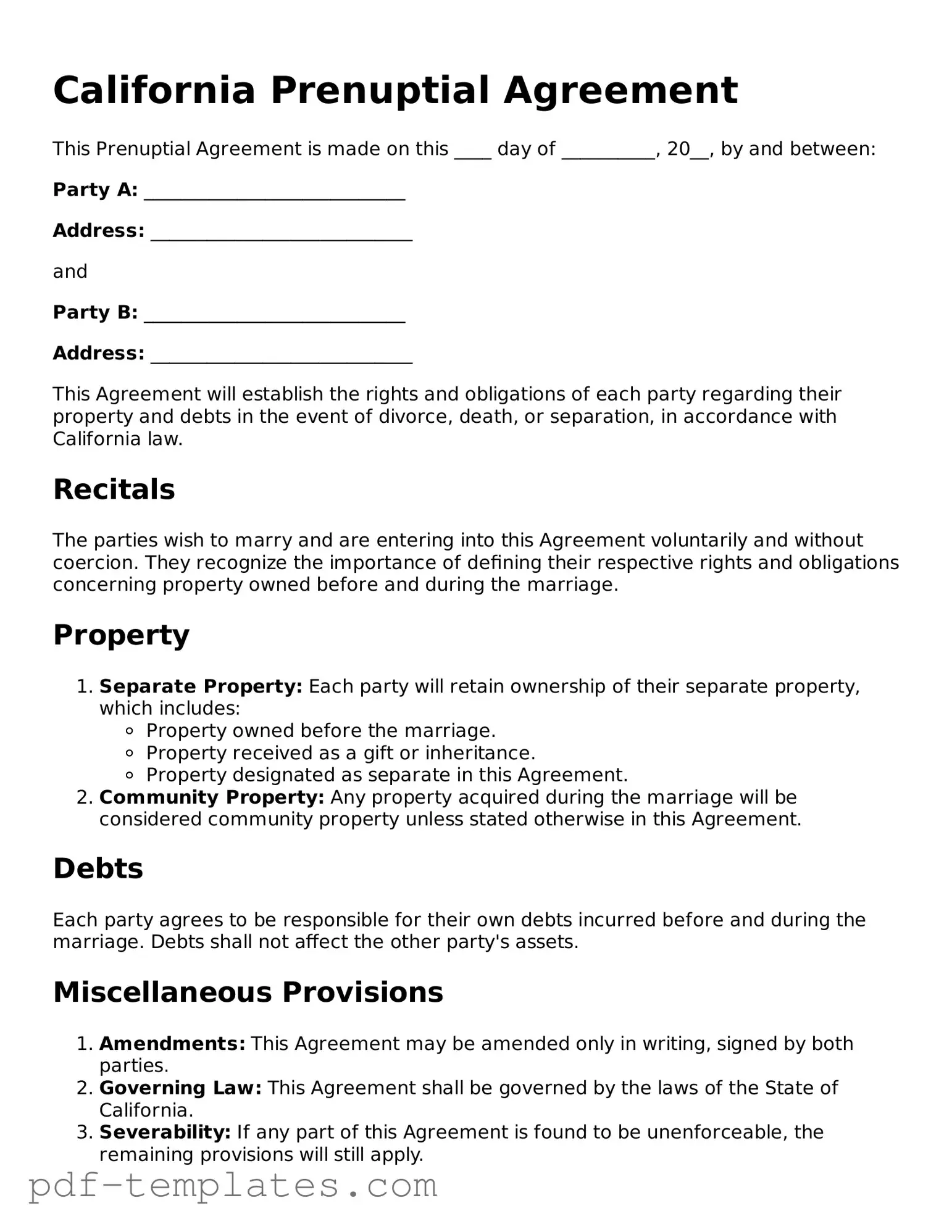Official Prenuptial Agreement Template for California State
A California Prenuptial Agreement form is a legal document that couples use to outline the division of assets and financial responsibilities in the event of a divorce or separation. This agreement helps protect individual interests and provides clarity regarding property rights before marriage. Understanding its importance can lead to a more secure and transparent relationship.
If you're ready to take the next step in securing your future, fill out the form by clicking the button below.
Customize Form Now
